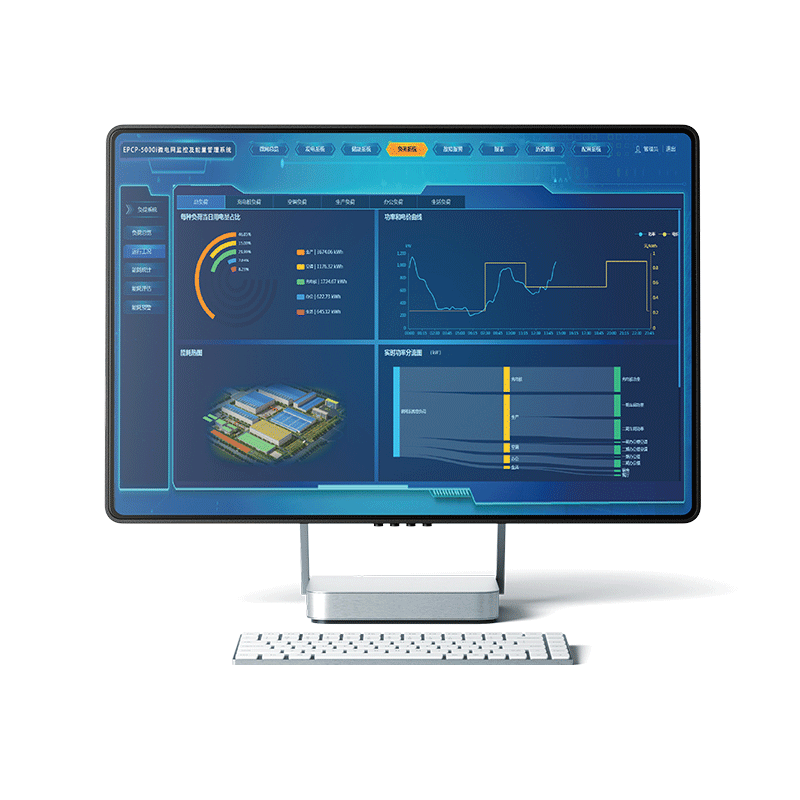Microgrid Monitoring and Energy Management System
The EPCP-MG-5000i Microgrid Controller delivers a reliable communication framework for connecting multiple devices, providing real-time microgrid status monitoring and automated management. Designed for urban microgrids and renewable energy integration, it enhances energy efficiency, stability, and intelligent power distribution, making it ideal for advanced energy systems and smart grid applications.
- Main Functions
| 01 |  |
Power Generation Forecast Predicts power generation based on meteorological data and historical microgrid performance. |
| 02 |  |
Load Forecast Provides load forecasting by analyzing historical data from the microgrid. |
| 03 |  |
Meteorological Data Acquires weather information from third-party providers. |
| 04 |  |
Grid Connection Constraints Management Manages grid connection power constraints according to user requirements. |
| 05 |  |
Optimized Dispatch Automatically optimizes target values and control based on real-time topology. |
| 06 |  |
Power Generation and Consumption Planning Develops generation and consumption plans according to dispatch or local curves. |
| 07 |  |
Source-Grid-Load-Storage-Charging Management Manages microgrid power sources, loads, energy storage, and EV charging stations comprehensively. |
| 08 |  |
Microgrid Analysis Conducts energy efficiency analysis for the microgrid. |
- EPCP-MG-5000i - Microgrid Monitoring and Energy Management System Features
-
 Customizable ManagementIntegrates forecasting and scheduling for maximum economic benefits.
Customizable ManagementIntegrates forecasting and scheduling for maximum economic benefits. -
 Real-time MonitoringEfficient management of energy resources in grid-connected and off-grid modes.
Real-time MonitoringEfficient management of energy resources in grid-connected and off-grid modes. -
 Direct CommunicationSupports various devices, improving communication speed and reliability.
Direct CommunicationSupports various devices, improving communication speed and reliability. -
 Autonomous OperationSmart controls for assessing and managing microgrid conditions with minimal human intervention.
Autonomous OperationSmart controls for assessing and managing microgrid conditions with minimal human intervention. -
 Web-based AnalysisRemote access to operational data and customizable reports.
Web-based AnalysisRemote access to operational data and customizable reports.
- Specifications
| System Real-Time Performance | |
| Delay Time from Telemetry Beyond Deadband to Display | ≤2s |
| Delay Time from Status Change to Display | ≤2s |
| Command and Control Transmission Time | ≤1s |
| Response Time for Full Screen Call-Up | ≤2s |
| Real-Time Data Refresh Interval | ≤3s |
| Event Sequence Recording Resolution (SOE) | ≤2ms |
|
System Capacity |
|
| Real-Time Data Capacity | ≥500K |
| Historical Data Storage | ≥3Y |
|
Reliability |
|
| Remote Control and Adjustment Accuracy | 100% |
| System Availability | ≥99.99% |
| Mean Time Between Failures (MTBF) | ≥40000h |
| Operating Lifespan of Major System Equipment | ≥10Y |
|
Hardware Requirements |
|
| CPU | At least 4-Core 1.6 GHz |
| Memory | At least 16 GB RAM |
| Hard Disk | At least 500 GB |
| Graphics Resolution | At least 1024 x 768 Resolution |
|
Power Requirements |
|
| Rated Voltage | AC 220V or AC 110V |
| Permissible Deviation | ±15% to ±10% |
| Ripple Factor | Not greater than 5% |
| Frequency | 50Hz, with allowable deviation of ±5% |
| UPS Power Supply | An uninterruptible power supply (UPS) or inverter power supply should be configured on-site, with the UPS maintaining normal system operation for 1 to 2 hours. |
- Application Scenarios

Urban microgrids
Renewable energy integration
Grid-connected and off-grid energy management
EV charging station management



